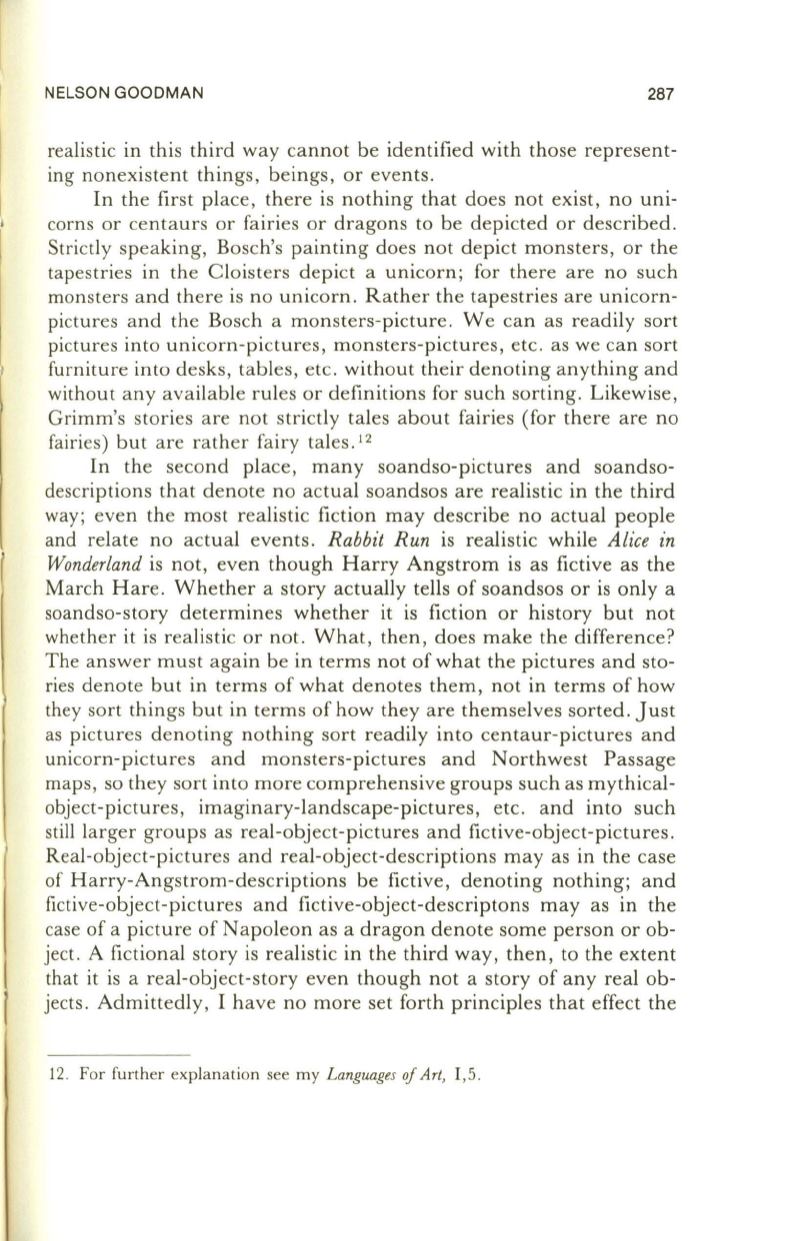
NELSON GOODMAN
287
realistic in this third way cannot be identified with those represent–
ing nonexistent things, beings, or events.
In the first place, there is nothing that does not exist, no uni–
corns or centaurs or fairies or dragons to be depicted or described.
Strictly speaking, Bosch's painting does not depict monsters, or the
tapestries in the Cloisters depict a unicorn; for there are no such
monsters and there is no unicorn. Rather the tapestries are unicorn–
pictures and the Bosch a monsters-picture. We can as readily sort
pictures into unicorn-pictures, monsters-pictures, etc. as we can sort
furniture into desks, tables, etc. without their denoting anything and
without any available rules or definitions for such sorting. Likewise,
Grimm's stories are not strictly tales about fairies (for there are no
fairies) but are rather fairy tales.
12
In the second place, many soandso-pictures and soandso–
descriptions that denote no actual soandsos are realistic in the third
way; even the most realistic fiction may describe no actual people
and relate no actual events.
Rabbit Run
is realistic while
Alice in
Wonderland
is not, even though Harry Angstrom is as fictive as the
March Hare. Whether a story actually tells of soandsos or is only a
soandso-story determines whether it is fiction or history but not
whether it is realistic or not. What, then, does make the difference?
The answer must again be in terms not of what the pictures and sto–
ries denote but in terms of what denotes them, not in terms of how
they sort things but in terms of how they are themselves sorted. Just
as pictures denoting nothing sort readily into centaur-pictures and
unicorn-pictures and monsters-pictures and Northwest Passage
maps, so they sort into more comprehensive groups such as mythical–
object-pictures, imaginary-landscape-pictures, etc. and into such
still larger groups as real-object-pictures and fictive-object-pictures.
Real-object-pictures and real-object-descriptions may as in the case
of Harry-Angstrom-descriptions be fictive, denoting nothing; and
fictive-object-pictures and fictive-object-descriptons may as in the
case of a picture of Napoleon as a dragon denote some person or ob–
ject. A fictional story is realistic in the third way, then, to the extent
that it is a real-object-story even though not a story of any real ob–
jects. Admittedly, I have no more set forth principles that effect the
12. For further explanation see my
Languages of Art,
I,5.


